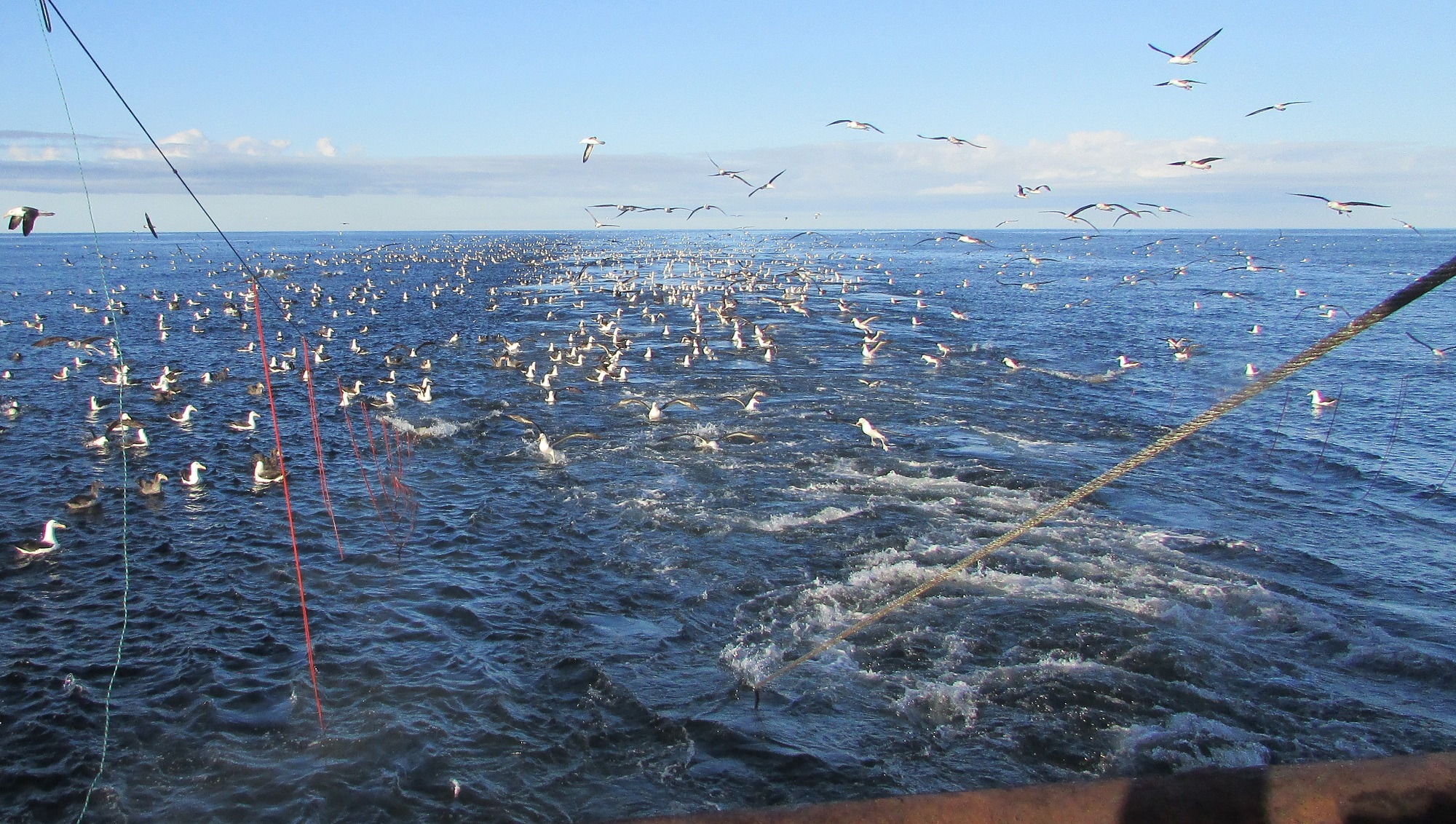
Black-browed Albatrosses gather behind a Uruguayan trawler deploying twin bird-scaring lines either side of the warp cable; photograph by Pablo Troncoso
Sebastián Jiménez (Laboratorio de Recursos Pelágicos, Dirección Nacional de Recursos Acuáticos, Montevideo, Uruguay) and colleagues have published in the journal Biological Conservation on reducing seabird mortality due to warp cable collisions in a demersal trawl fishery in the South Atlantic.
The paper’s abstract follows:
“The incidental mortality in trawl fisheries is considered a conservation threat for many seabirds. We simulate management scenarios, combining bird scaring lines (BSL; zero, one and two) and variables describing discards (occurrence, levels, type, and mode), to predict the total seabird collisions with warp cables potentially produced by a demersal trawl fleet operating in a region and season of high seabird abundance. A total of 2067 collisions, including 439 heavy collisions and 53 fatal collisions, were recorded on five trips aboard the Uruguayan trawl fleet. One BSL reduced collisions and heavy collisions by 89%, and the associated mortality by 94%. Best management scenarios in terms of reducing collisions were those without discards, where the models with BSL outperformed the scenarios without BSL. Scenarios with two BSL presented slight improvements, likely caused by the small sample size. Under a scenario without discards, the mortality caused by the entire fleet is likely to be negligible. Given the inability to eliminate discards in most situations, we simulated scenarios of discharge produced in batches with BSL. This could drive mortality to negligible levels. We provide six recommended scenarios (S) ordered by expected reduction in seabird mortality. Fisheries implementing BSL as a single mitigation measure should present a strong reduction in seabird mortality. However, the ability to hold discards on board, at least partially, can drive mortality to negligible levels. This should occur without discards and BSL use (S1), without discards and without BSL (S2), and with batch discharge and BSL use (S3).”
Black-browed Albatrosses behind a trawler in the South Atlantic, photograph by Graham Parker
With thanks to Sebastián Jiménez.
Reference:
Jiménez, S., Páez E., Forselledo, R., Loureiro, A., Troncoso, P. & Domingo, A. 2022. Predicting the relative effectiveness of different management scenarios at reducing seabird interactions in a demersal trawl fishery. Biological Conservation 267. doi.org/10.1016/j.biocon.2022.109487.
John Cooper, ACAP Information Officer, 23 February 2022

 Français
Français  English
English  Español
Español 